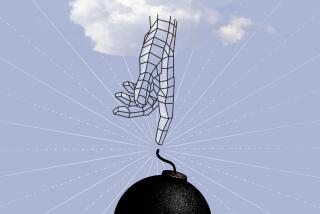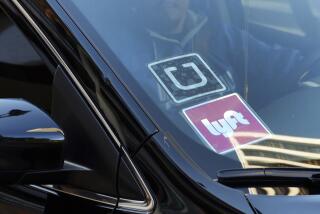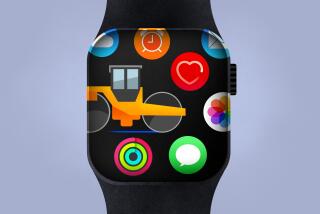Apple Idealism Perseveres . . . Even if Column Doesn’t
- Share via
After 55 columns over 2 1/2 years, this will be my last Mac Smart.
In my years of covering Apple as a reporter, editor and columnist, one episode sticks in my mind as most emblematic of that fabled company’s strengths and weaknesses.
Some time ago, as an editor at Macworld magazine, I broke a story about a small team of young Swiss engineers from a tiny company called Quix Computerware. That small team of software wizards accomplished something that Apple said could never be done in a practical way: They created a version of the Mac OS that ran on computers that used PowerPC chips--the chips used in the Mac--but otherwise operated on the same “industry standard” hardware as a Windows PC.
Macworld tested the Quix software on machines from Motorola, IBM and an obscure hardware company, FirePower Systems, which gave the young software wizards moral and material support. The implications were dramatic in that factions within IBM, among other big companies, were jockeying for a Mac OS license and saw Quix as the probable key to rapidly building Mac clones for the mass market--something Apple claimed to want at the time.
My story told how Apple led Quix on, then gave it the shaft, opting instead to move the Mac OS to another industry-standard platform known as the common hardware reference platform, or CHRP. Apple also objected to the Quix product on the grounds that it might not work with the then-under-construction “Copland”--code name for Apple’s mammoth effort to modernize the Mac OS. IBM, in particular, was baffled as to why Apple would torpedo Quix, which looked like the last, best hope to rapidly rebuild Mac OS market share.
The story broke at Macworld Expo in August 1995 and was picked up widely in the national media. As it happened, I was moderating a panel that included Apple’s top licensing officials. The official who was principally responsible for shafting Quix was so incensed that he refused to shake my hand.
He did show up, with his boss and a publicist, for a lunch with me the next day. Over grilled fish and a view of Boston Harbor, the Apple exec turned red with rage, sputtered and raved, turning all the heads in the restaurant until his colleagues cooled him down to stony silence. I’ve rarely seen so intemperate a display by a corporate exec.
Why the tirade? He was embarrassed by the article, of course (although he refused repeated requests to tell his side of the story in print). But I think something else was the root cause: He was a member of Apple’s legion of true believers--people who identify so closely with the company that they can’t see any other reality, even one that the rest of the world views as self-evident.
Sometimes this is called believing your own BS. But at Apple, there’s a fine line between that all-too-typical business foible and something more noble--a belief that the company serves a goal higher than narrow business interests.
That so many Apple people walk the line makes the company both fascinating and exasperating. A long chain of brilliant iconoclasts, whose arrogance caused them to misread the most basic market trends, delivered some breathtaking failures like Lisa, Newton, the Macintosh Portable and a generation of under-powered, overpriced Performas.
The same company confounded the experts and set new standards for the entire industry with the original Mac, the PowerBook, the LaserWriter, Hypercard, QuickTime and the iMac.
As Apple’s original evangelist, Guy Kawasaki, once said about the company, “This is a Fortune 500 killing machine that exists to increase the wealth of its shareholders.”
But a higher purpose--superior technology that offers more finesse, friendliness and fun than any competitor--is also a part of Apple’s culture. Many computer companies aspire to so lofty a goal, but few ever persuade customers to believe in it.
So here’s the epilogue: Years after the Quix episode, Apple killed cloning, along with its two gigantic strategic efforts, CHRP and Copland--before they became products, but after the company and scores of partners spent hundreds of millions of dollars on useless development. Not long after that it hired Jon Rubinstein and Glen Miranker, who during the Quix episode were the top guys at Firepower Systems, to run Apple’s hardware team.
Credit part of Apple’s recent revival to the bean counters, who reined in the company’s useless extravagance. But a lot of the thanks, finally, goes to the idealists.
So I take leave of my regular Mac column with some regret. But who can ignore one of the most interesting stories Silicon Valley has ever known? I’ll continue to touch on Apple and the Mac in my new biweekly column, Innovation, which debuts Oct. 19. That column will tackle a wide range of issues and controversies in the world of computing and the Internet. As always, your ideas and comments will be welcome.
*
Times staff writer Charles Piller can be reached via e-mail at charles.piller@latimes.com.






